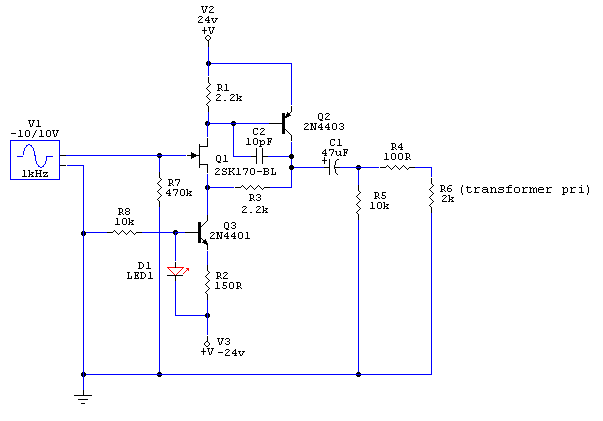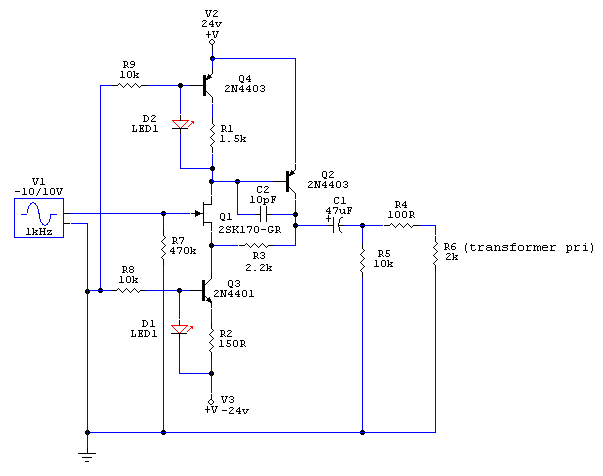rafafredd
Well-known member
Hey Brad, I just got the parts you sent me today. I may even use these in this circuit here... Thanks for these.
As I said, I´ll have to take a look later at Wavebourn circuit to understand it. I can´t sight-read it.
On the other hand, I just aplyed some changes you´ve offered for my simpler circuit.
Sounds bad, Wilson is out!
More food for though.
In the meanwhile, here are two more versions, with more comon CCS:


As I said, I´ll have to take a look later at Wavebourn circuit to understand it. I can´t sight-read it.
On the other hand, I just aplyed some changes you´ve offered for my simpler circuit.
the Wilson mirror has too much required voltage drop to work in that position, unless the Q2 emitter is biased a bit lower than +V. The other problem is the Wilson without any ballasting R's in the emitters of Q4 and Q5 is pretty noisy.
Sounds bad, Wilson is out!
You could contrive a bootstrapped common-base stage or common-gate stage to shield Q1 from excessive volts.
More food for though.
In the meanwhile, here are two more versions, with more comon CCS:






































